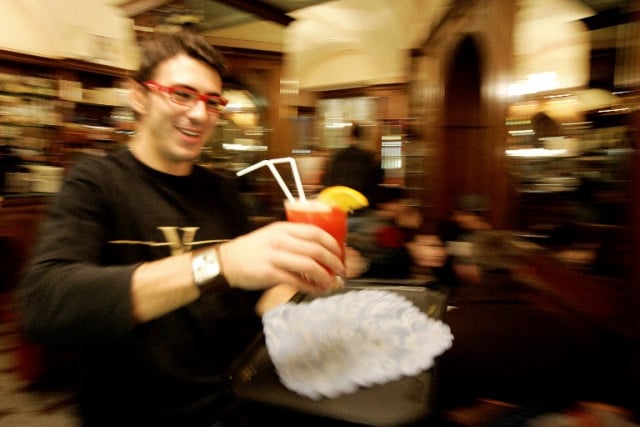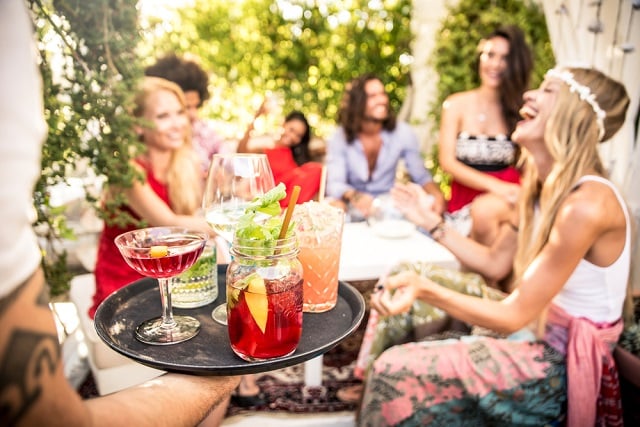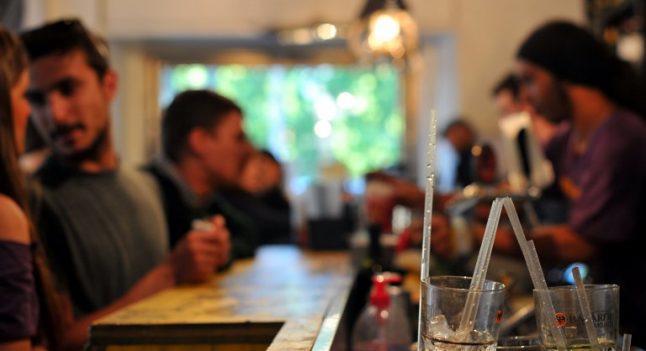They are long leisurely affairs to be undertaken with friends in early or late evening, the food is usually more than decent and they are affordable even on the most meagre of budgets. All you need to do is buy a drink and your food is free. Shall we?
I'd really love to go out to dinner, but I can't afford it…
It's only going to cost €5-12 depending where we go. Are you sure you don't want to come? I know an excellent place….
Okay then. But it's my first time…
Well don't look so nervous. We're only going to the pub for an apericena.
Apericena? I thought you said aperitivo?
Good point. A standard pre-dinner drink becomes an aperitivo when it is accompanied by more than just nuts or crisps. Maybe a small starter of goats cheese, olives, or something like that.
You can be sure you're at an apericena, however, when your drink is accompanied by dinner in the form of an all-you-can-eat buffet. Confusingly, the word aperitivo is often used to describe this too, which will probably annoy the traditionalists but hey-ho, we didn't make the rules.
Now that that's out the way we're ready to get going. All you need to do is order a drink.
But what should I drink?
For a traditional style aperitivo, a light (usually dry or bitter drink) will be consumed. Favourites include, Campari, Vermouth, Negroni, Aperol Spritz and Prosecco – but anything goes really. If you hit the right bar at the right time you can have your aperitivo with anything from a Weissbier to a mojito.

Photo: Paco Serinelli/AFP
Remember that it's going to be accompanying food, so excessively sweet or creamy cocktails are a no-no. But by far the most important thing is to take it slowly, and socialize.
Socialize? I normally just inhale my food and down my pint of lager…
No. The apericena/aperitivo is a social event. It's where you go on a first date, or to catch up with an old friend.
They're great if you're on a limited budget, too, so expect to find lots of hard-up and hungry students, travellers, and young professionals – all of whom will be chatting away noisily. So be prepared to talk.
What else do I need to know?
The aperitivo has an interesting history, and despite its popularity across different areas of Italy it is very much associated with Turin. Although some anthropologists claim the idea of a pre-dinner drink stretches back as far as the ancient Egyptians, the creator of the modern day aperitivo is generally credited as being Antonio Benedetto Carpano.
Carpano is known as the inventor of Vermouth which he first made in Turin in 1786 by infusing Moscato white wine with herbs and spices. Apparently the drink was considered perfect for opening the stomach before a good meal.
Within no time at all, the shop where Antonio worked on in piazza Castello was the most popular bar in Turin. Fast forward a couple of hundred years and the aperitivo culture is still very much part of daily life in Italy..
Thanks! My new friends loved that aperitivo story. But I'm still hungry and have finished my food. What can I do?
Look, the idea is to eat until you are full. The plates are normally tiny plastic things, so don't feel bad about going back for seconds (or thirds). You don't need to buy another drink.
In fact, you probably shouldn't buy another drink. Usually during aperitivo hours the prices of drinks are inflated because that's how the bars make their money.
READ ALSO: Five great spots for aperitivo on a budget in Milan

Photo: oneinchpunch/Deposit Photos




 Please whitelist us to continue reading.
Please whitelist us to continue reading.
Member comments